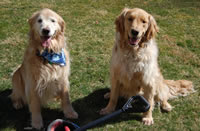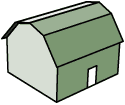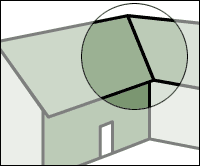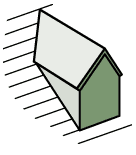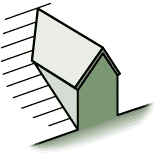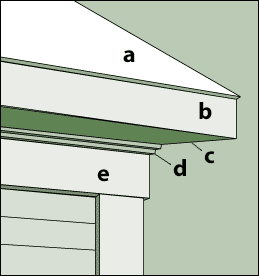 |
 |
 |


Location: 52 Commerce Street Phone: 203-834-1918 Contact information: Owner: Guy Poirier
Fax: 203-855-7784 CT Reg. #00556567 |
Roof Terms and Terminology
|
||||||||||||||||||||||||||||||||||||||
| A | B | C |
D |
E |
F |
G |
H |
I | J | K | L | M |
N | O | P |
Q | R |
S |
T | U | V |
W | X | Y | Z |
A roof is one of the defining elements of any home and is made up of many detailed parts. Below is a glossary of roof terms and illustrations to help you understand more about roofs. Thanks to BobVila.com...
Roof Shapes
Roofs are broken into two basic shape families: gabled and hipped.
Gabled
Gabled refers to the family of houses classified by the straight slope falling from ridge to eave, creating a peak or triangle on the side or front facade. Gabled houses have rakes on the gable facades and eaves on the non-gabled facades.
 Side-gabled Side-gabledThis style of home locates the front door on the non-gabled façade. |
 Front-gabled Front-gabledhouses have the peak or gable facing the front. |
 Cross-gabled Cross-gabledHouses have additional sections or wings crossing perpendicular to the main section, meeting in a valley, each with its own peaked or gabled façade. |
Hipped
This family of houses avoids having a peak or triangle at the roof junction by breaking the roof plane along the slope line, allowing the roof to bend or wrap around the house. Hipped houses have an even roof to wall junction all the way around the house and eaves on all sides.
 Simple A hipped roof where all four roof faces rise to a ridge across the top, often with broader faces across the front slope and narrower side sections. |
 Pyramidal PyramidalA hipped roof where all four sides come to a point at the roof peak. |
 Cross-hipped A roof with multiple sections or wings that cross the main section, meeting in a valley, each with its own hipped profile. |
Additional Roof Shapes
Roof Details
Dormers and Gables
Gables are actually roof sections that face in a different direction from the main roof (i.e. cross gables). They are built as part of the roof, rise up from the roof-to-wall junction, and have no walls. This type of construction may be used to create a new roof section or wing, or simply to open the roofline for a window.
Eave Details
The edge of the roof that runs horizontally across the façade, comprised of the rafter ends used to construct the roof. Eaves may be open or enclosed, with lots of, little, or no overhang.
Pitch
The degree of slope, steepness, of the roof from ridge to eave or valley.
| Low slope A roof angle or pitch that is less than 30 degrees. |
Normal slope A roof whose angle or pitch is from 30 to 45 degrees. |
Steep slope A roof whose angle is more than 45 degrees. |
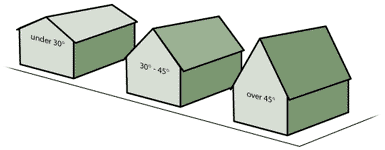 |
||
Check work in your town: |
Wilton / New Canaan /Westport / Weston / Ridgefield / | |||||
© copyright Bailiwick Roofing and Siding, Inc 2011 |
||||||
